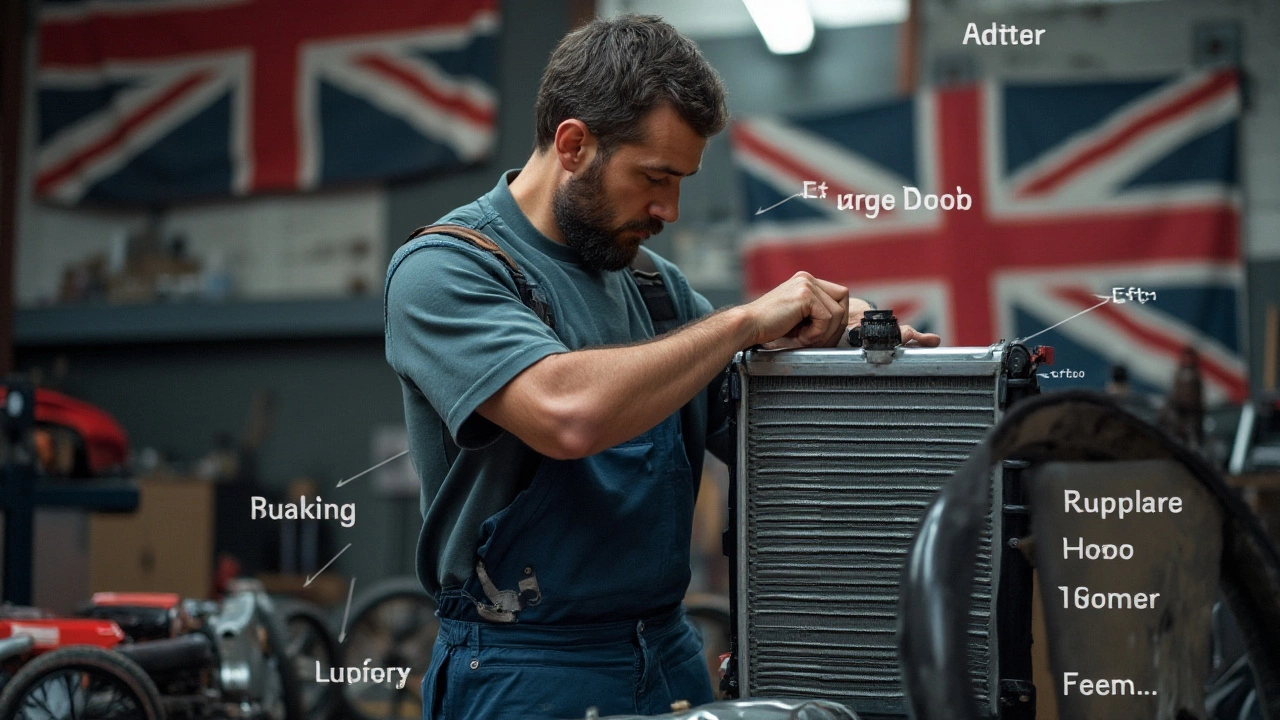Radiator Components: Parts, Function, and Maintenance
When dealing with radiator components, the parts that move heat from your engine to the air and keep the cooling system running smoothly. Also known as cooling system parts, they include the radiator, a metal core with tubes that let coolant flow and release heat, the coolant, a fluid mixture that absorbs engine heat and the thermostat, a valve that regulates coolant flow based on temperature. Together they ensure the engine stays within safe limits.
Radiator components encompass the radiator, cooling fan, thermostat, hoses, and water pump. The radiator itself is usually made of aluminum or copper; its attribute material determines heat‑transfer efficiency, while its design (single‑pass or dual‑pass) defines flow rate. The cooling fan, driven either electrically or by a belt, adds the attribute speed control – modern fans use a temperature‑sensing relay to spin faster when the coolant gets hot. Hoses, typically reinforced rubber, have the attribute pressure rating, which must match the system’s max pressure (usually around 15‑20 psi). The water pump’s attribute flow capacity (liters per minute) dictates how quickly coolant circulates. A properly matched set of these parts keeps the engine temperature between 85 °C and 105 °C, which is the sweet spot for performance and fuel economy.
Common Issues and Quick Checks
A failing thermostat influences radiator performance by either starving the engine of coolant (if stuck closed) or causing constant over‑cooling (if stuck open). Leaking hoses reduce system pressure and can introduce air bubbles, leading to hot spots and overheating. A rusty or clogged radiator core limits heat exchange, showing up as a gradual rise in temperature gauge despite normal driving conditions. The cooling fan may grind or fail to activate, which you can spot by listening for a sudden silence when the engine heat climbs. When any of these parts deteriorate, the whole cooling system suffers, and you might notice symptoms like coolant leaks, a sweet smell under the hood, or the dreaded "engine overheating" warning.
Understanding how each piece works helps you diagnose problems before they turn into costly repairs. In the articles below you’ll find a deep dive into what happens when the radiator goes bad, step‑by‑step guides to check your fan and thermostat, and practical advice on choosing the right coolant mix for UK weather. Whether you’re a DIY‑enthusiast or just want to know when to call a professional, this collection of posts gives you the tools to keep your radiator components in top shape and avoid unexpected breakdowns.

Essential Parts to Replace When Changing Your Car Radiator
Jan 27 2025 / Car MaintenanceChanging a car radiator involves more than simply swapping out an old part for a new one. To maintain efficient cooling, it's essential to also consider replacing other critical components that work alongside the radiator. These components ensure that your vehicle's cooling system functions optimally, preventing overheating and extending the life of your car. It's important to stay informed about which parts should be examined and potentially replaced during a radiator change.
VIEW MORE